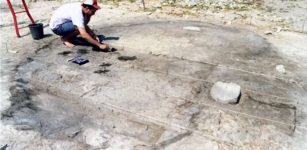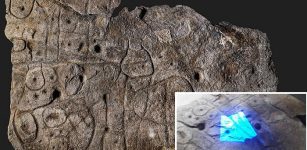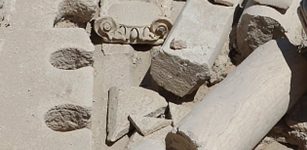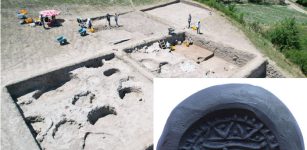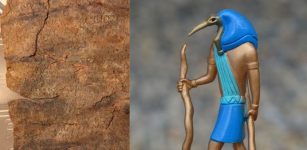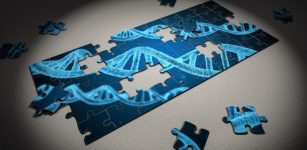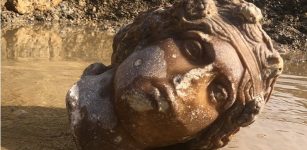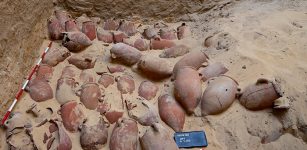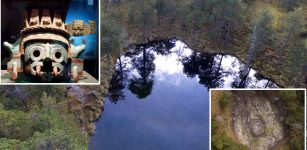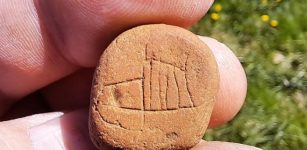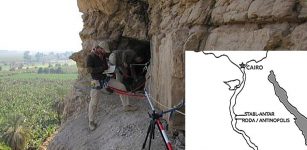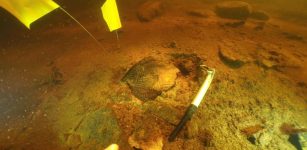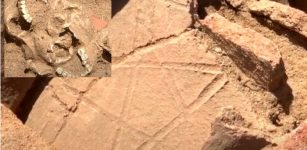Modern-Day Scottish, Welsh And Northern Irish People Have Pictish Ancestry – New Study
Jan Bartek - AncientPages.com - The Picts of Scotland who have long intrigued and have been ascribed exotic origins in fact descended from indigenous Iron Age society and were genetically most similar to people living today in Scotland, Wales, North Ireland and Northumbria.
The Picts, who inhabited early medieval Scotland from about 300–900 AD, formed the first documented kingdoms of eastern Scotland, but have often been a subject of mystery due to the lack of historical and archaeological evidence and due to their enigmatic symbol tradition inscribed on stone.
St. Columba converting the Picts to Christianity, by the 19thC artist William Hole. Credit: William Hole - CC BY-SA 3.0
In a new study, Adeline Morez of Liverpool John Moores University and Linus Girdland-Flink of the University of Aberdeensampled Pictish burials to extract genomes to explore how the Picts are related to other cultural groups in Britain. They sequenced DNA from two individuals from central and northern Scotland that dated from the fifth to the seventh century AD. They compared the resulting high-quality genomes to more than 8,300 previously published ancient and modern genomes.
The analysis revealed that Picts descended from local Iron Age populations, who lived across Britain before the arrival of mainland Europeans. Additionally, the researchers found genetic similarities between the Picts and present-day people living in western Scotland, Wales, Northern Ireland and Northumbria. Medieval traditions, including from the time of the Picts themselves, had ascribed exotic origins to the Picts including them coming from Thrace (north of the Aegean Sea), Scythia (eastern Europe), or isles north of Britain, but the new research suggests much less sensational origins.
A further analysis of DNA sequenced from seven individuals interred in a Pictish cemetery showed that the individuals did not share a common ancestor on their mother's side. This finding suggests that females may have married outside their own social group and runs counter to older speculation, such as that mentioned by the great English scholar Bede, that the Picts were matrilineal; that they had had a society based on kinship through the mother's lineage.
The new findings support current archaeological theories that Picts descended from Iron Age people in Britain. The study also provides novel insights into the genetic relationships that existed among Pictish individuals buried in cemeteries together and between ancient Picts and present-day groups in the United Kingdom.
PLOS spoke to Dr. Morez about the research.
What did you choose to investigate in this study, and why?
Dr. Morez: In this study, I chose to investigate the genetic ancestry of the Picts—people living in Scotland during the early medieval period (here from individuals buried in eastern and northern Scotland). It has never been done and many historical-based hypotheses stated that they were biologically diverse from their neighbors, with possible ties from the Eurasian steppes.
Left: DNA - Credit: Pixabay - Public Domain - Right: Pictish stone. Credit: Adobe Stock - Guillaume
Once we realized they were actually genetically very similar to their contemporaries living in the UK, we decided to push the limit in terms of analytical resolution using imputation of genotypes and analyses based on the autosomal haplotype information (chunks of DNA shared from parents to offspring, modify by mutation and recombination). It allows us to study the fine-scale genetic structure between the Picts and ancient and modern individuals from the UK and Europe.
What are the key findings from your research on ancient Pictish genetics?
Dr. Morez: The two Picts studied here showed a greater affinity (by haplotype sharing) with present-day populations from western Scotland, Wales, Northern Ireland and Northumbria compared to the populations from southern England, which is important for understanding how present-day diversity formed in the UK.
Thanks to comparison with previously published genomes from Pictish people living in the Orkney islands, we could also show that individuals living in the Orkney and in mainland Scotland, likely gathered under the same cultural unit, were slightly divergent likely because of limited gene flow between the two regions and small population size in Orkney, which is known to speed up genetic divergence.
What most surprised or interested you about your findings?
Dr. Morez: I was surprised to find that the two Pictish genomes from eastern and northern Scotland show a slightly higher but noticeable haplotype sharing with present-day people living in western Scotland, rather than with those from the East where Pictish culture is believed to thrive. This was unexpected and may be caused by several reasons; either we are detecting a population movement from the west of Scotland toward the east but which did not leave a long-lasting genetic signature, or later population movements in the East replaced some of the Pictish ancestry. We still don't know which one is correct.
What do you hope your findings might lead to, and what are the next steps for your research?
Dr. Morez: I hope the fascination for the Iron Age and medieval period in the UK will increase and lead to more genomes being discovered and analyzed, to get a better understanding of the genetic structure across Scotland. Thanks to these genomes, those already published and the many more yet to come, the UK will soon become the first country where we understand in detail how genetic diversity has formed.
Pictish Stone in the Museum of Scotland. Credit: Johnbod/Wikimedia Commons, CC BY-SA
Future research will provide new information on the Pictish lifestyle, thanks to archaeologists from the University of Aberdeen and co-authors of the study. Gordon Noble who is reassessing and excavating new Pictish sites, and Kate Britton who investigates dietary habits and mobility using stable isotopes. Linus Girdland Flink (senior author, University of Aberdeen) is coordinating further research on Pictish DNA. This ongoing project will provide an excellent tool to facilitate interdisciplinary research to connect archaeology, archaeological science, history, and human population genetics.
The study was published in the journal PLOS Genetics
Written by Jan Bartek - AncientPages.com Staff Writer




